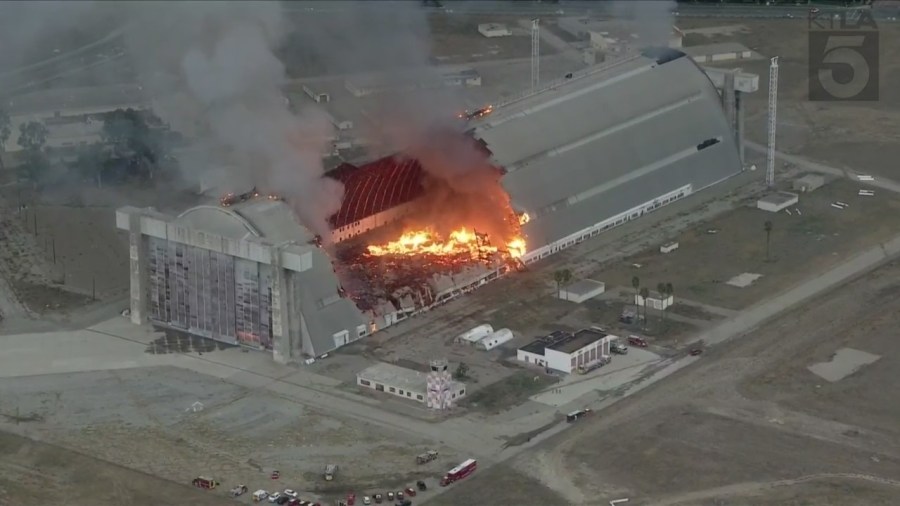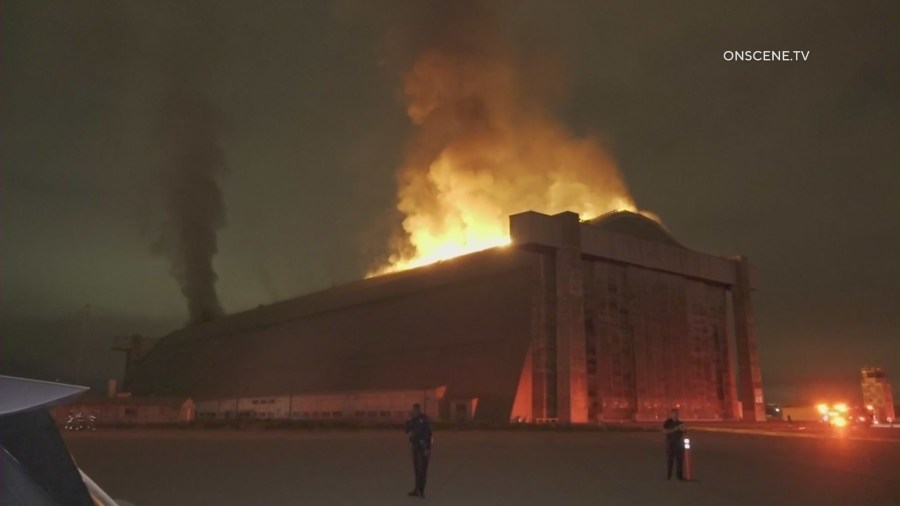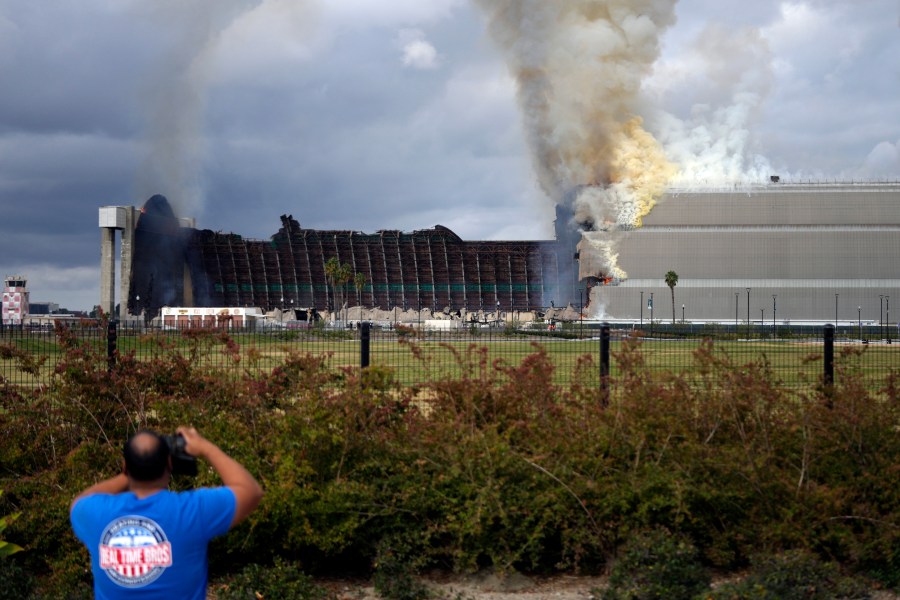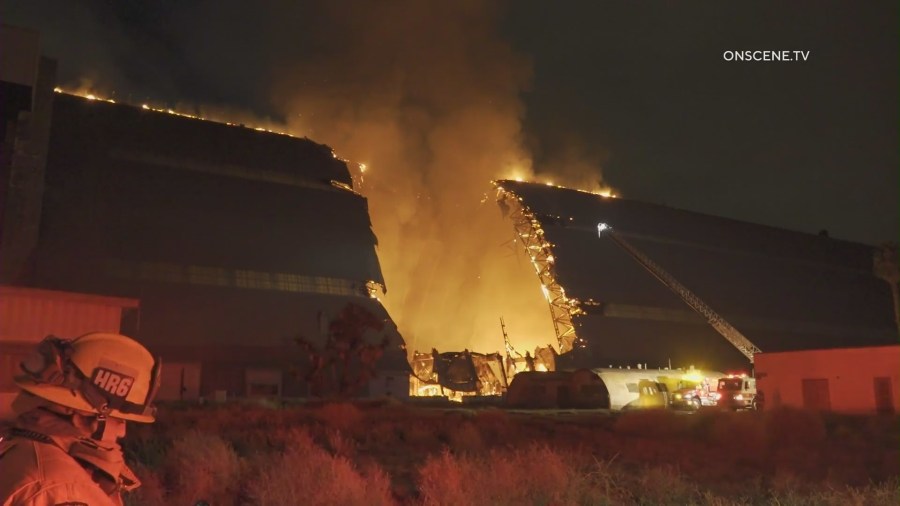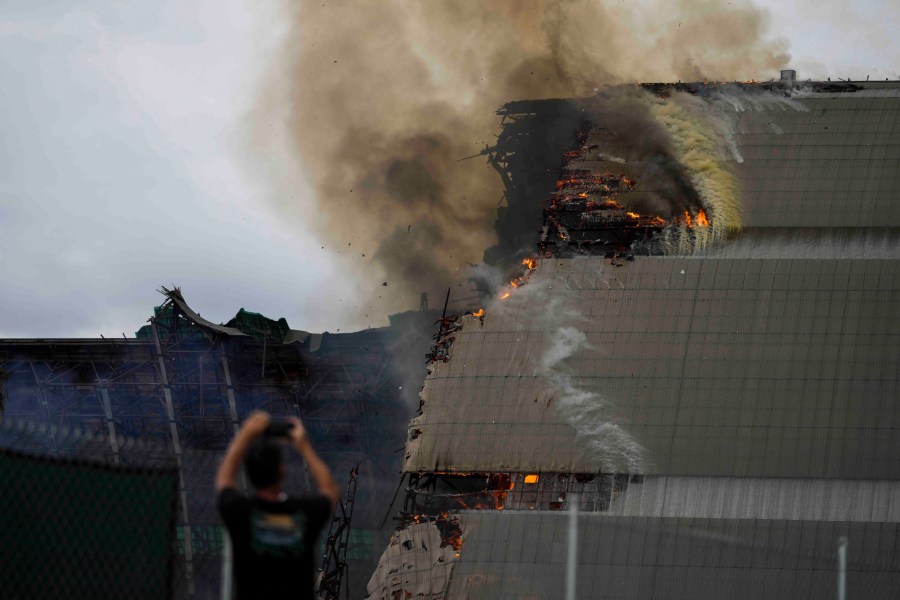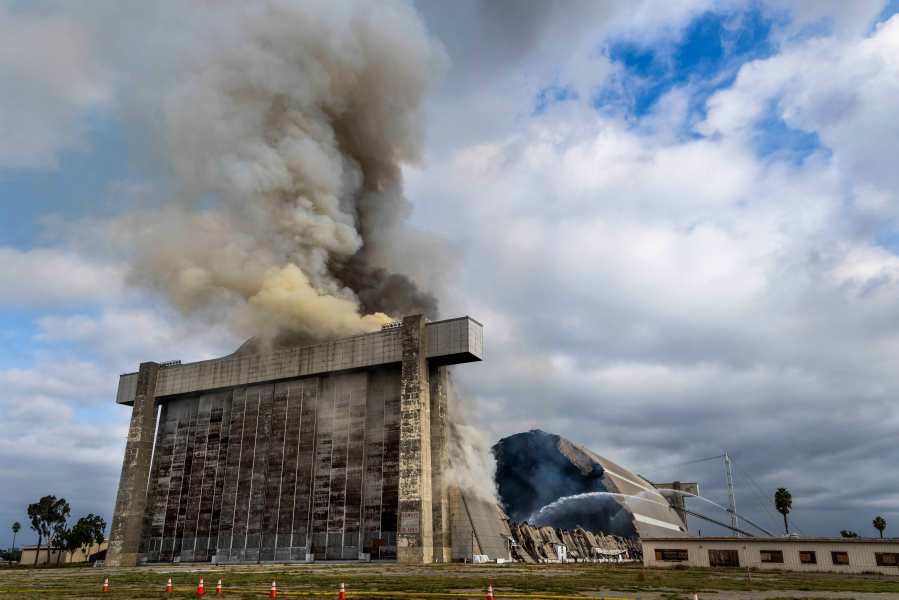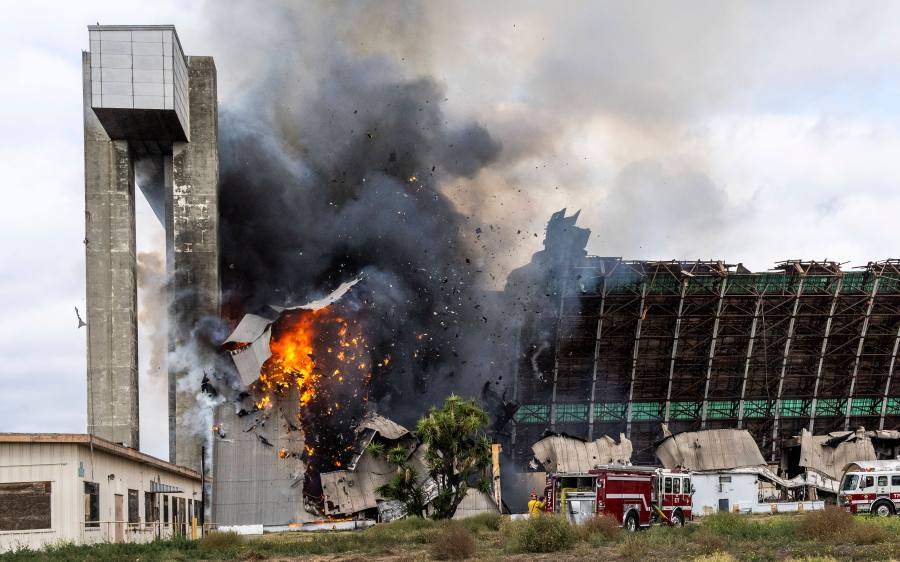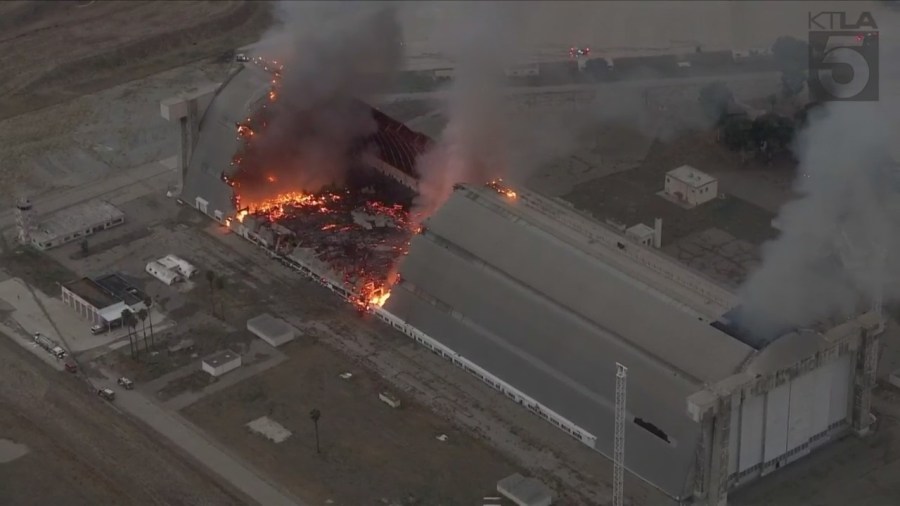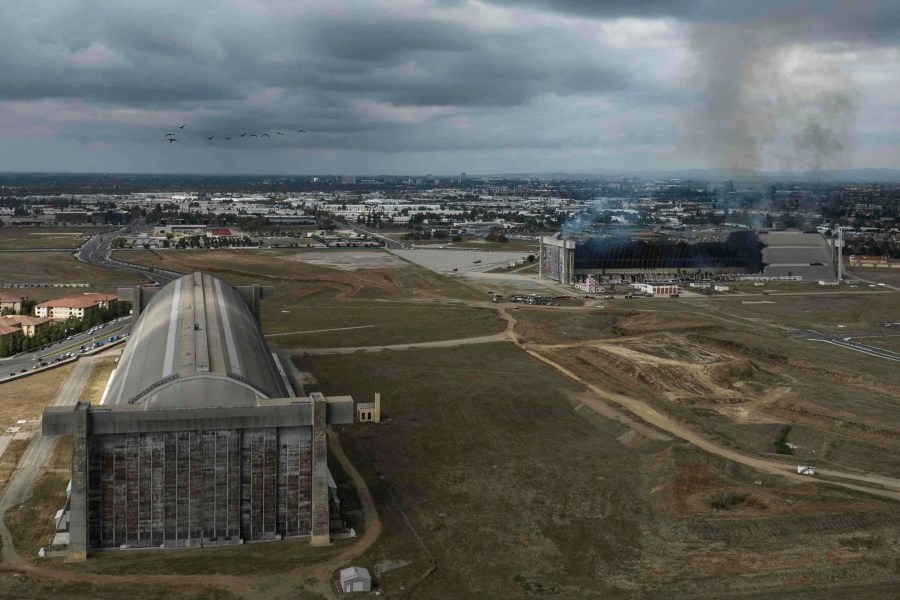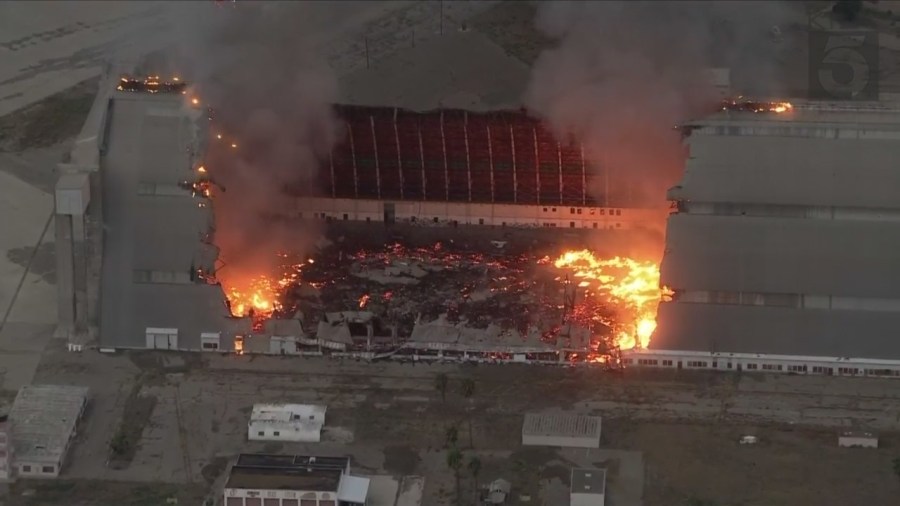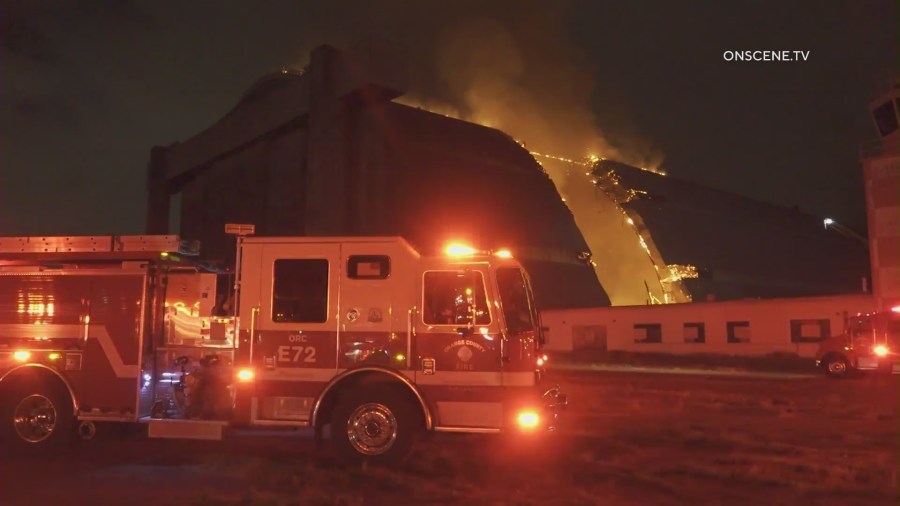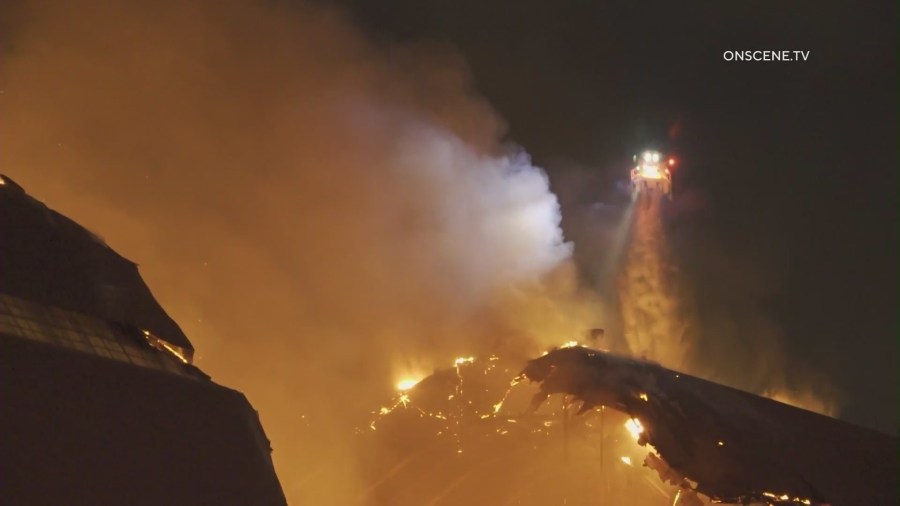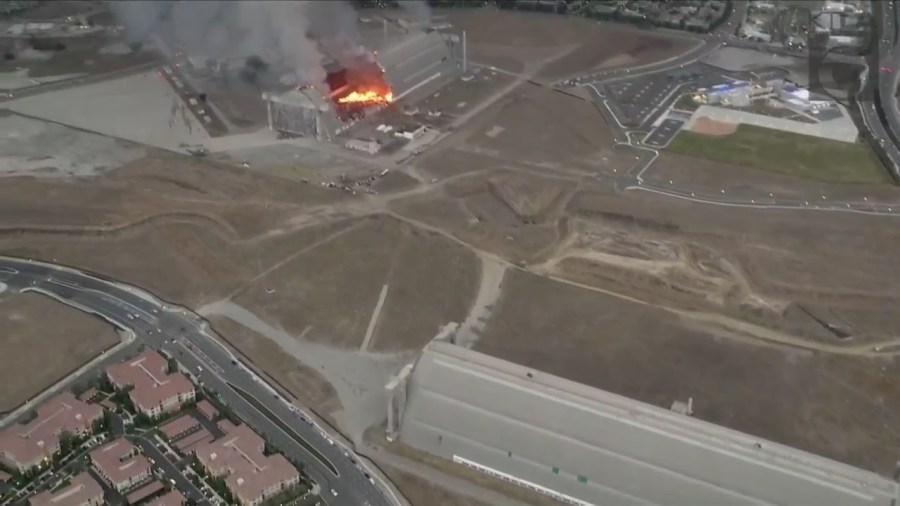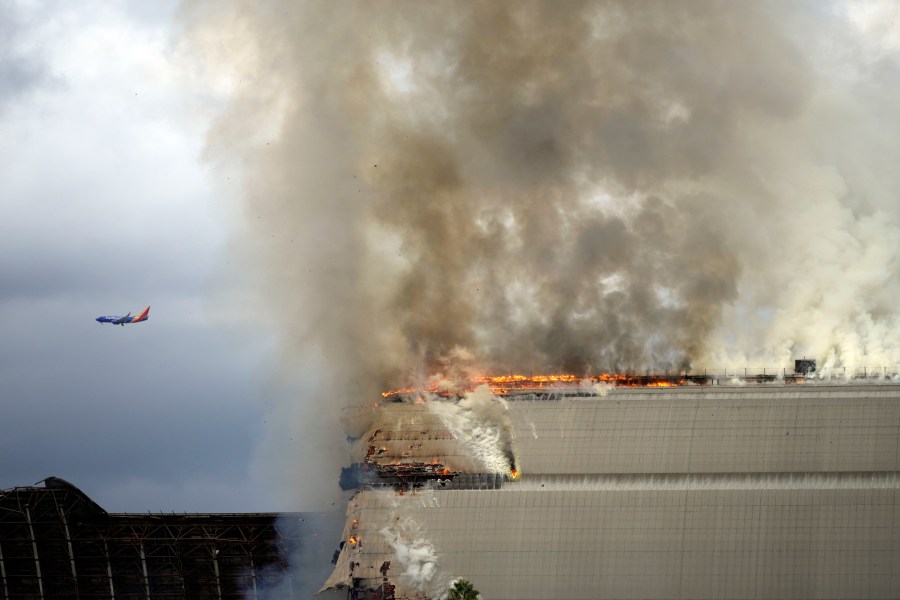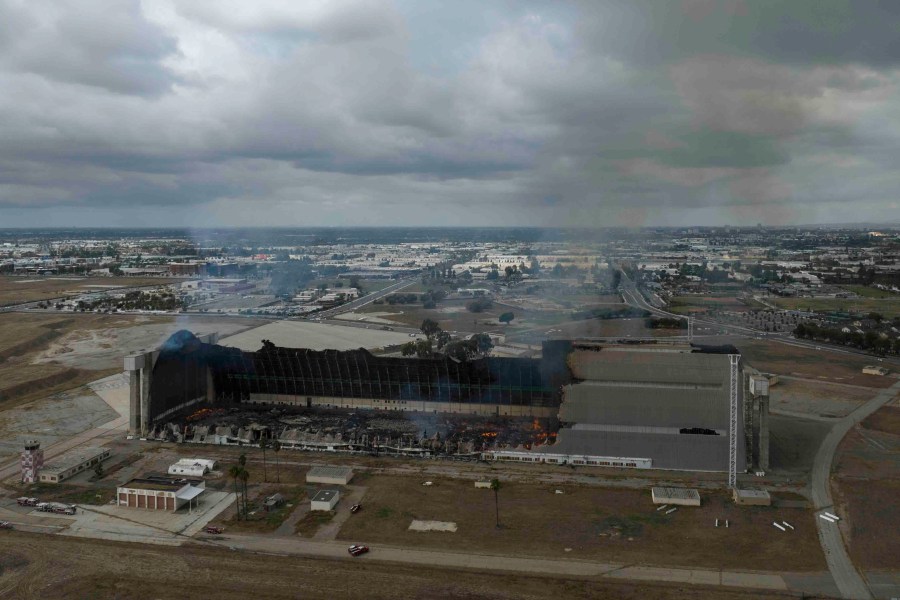After a historic air base hangar in Tustin went up in flames on Tuesday, health officials confirmed asbestos has been found amid the debris while air quality has been compromised.
On Wednesday, samples of debris and ash were collected in areas near the hangar and lab testing confirmed the presence of asbestos, according to the South Coast Air Quality Management District.
Officials have collected air samples near the hangar and in nearby communities which are being analyzed for “gaseous air toxics, such as benzene.” Monitoring was also conducted for metals such as lead and arsenic.
Following the fire, health officials warned that residual smoke and ash, paired with gusty winds this week, could pose a health risk to residents.
“Everyone should be aware of the recommended precautions to reduce the health effects of smoke and ash from building fires,” said Dr. Regina Chinsio-Kwong, County Health Officer and OC Health Care Agency’s Director of Public Health Services. “Extra measures may be needed for those with pre-existing medical conditions like heart or lung disease, those with disabilities, older adults, children, and those who may be working outdoors.”
The fire first ignited on Tuesday around 1 a.m. at the former Marine Corps Air Station, according to the Orange County Fire Authority. The north hangar, also known as Hangar 1, was completely engulfed in flames when crews arrived.
Firefighters immediately went into defensive mode to prevent the flames from spreading to nearby structures and crews were seen battling the blaze from the ground and by air. Eventually, fire crews said there was no other option but to let the blaze run its course in the wooden hangar.
“There’s literally nothing we can do about it at this point,” said Orange County Fire Authority Chief Brian Fennessy at the time. “We can’t get close enough to that building without concern for it collapsing on our firefighters.”
The twin blimp hangars – which measure 17 stories tall, 1,000 feet long and 300 feet wide – have been at Warner Avenue in Tustin since World War II and have been home to a fleet of blimps and eventually helicopters. The hangars were decommissioned in 1999.
They are two of the world’s largest freestanding wooden structures and both are listed on the National Register of Historic Places. Fennessy said the property is still owned by the U.S. Navy and the investigation will eventually be turned over to the military.
Those who may be impacted by windblown smoke, dust or ash should take these precautions:
- Limit exposure by remaining indoors with windows and doors closed or seek alternative shelter to reduce exposure to smoke and ash.
- Avoid touching ash as ash from burned structures is generally more hazardous than forest ash.
- Limit or avoid activities that will displace ash into the air.
- Avoid direct contact with ash. If you get ash on your skin, in your eyes, or in your mouth, wash it off as soon as you can.
- People with heart or lung disease, including asthma, older adults, children, and pregnant women should use special caution around ash.
- Children and pets: Children should not be nearby while you clean up ash. Do not allow children to play in ash. Clean ash off all children’s toys before use. Clean ash off pets and other animals.
- Avoid vigorous activity.
- Run your air conditioner or air purifier. If possible, do NOT use swamp coolers or whole-house fans that bring in outside air.
- If you will be outside, a properly fitted N95 or P100 respirator may provide some protection.
- Keep your airways (nose and mouth) moist by drinking extra amounts of water.
- People with respiratory or heart disease, the elderly, and children should remain indoors.
- Seek medical attention if you have symptoms such as chest pain, chest tightness, shortness of breath, or severe fatigue.
- Minimize exposure to other sources of indoor air pollution- avoid using anything that burns, such as wood fireplaces, gas logs, gas stoves – including candles or incense.
The cause of the fire remains under investigation. No injuries have been reported so far. Results from the debris and air quality testing will be posted here.

